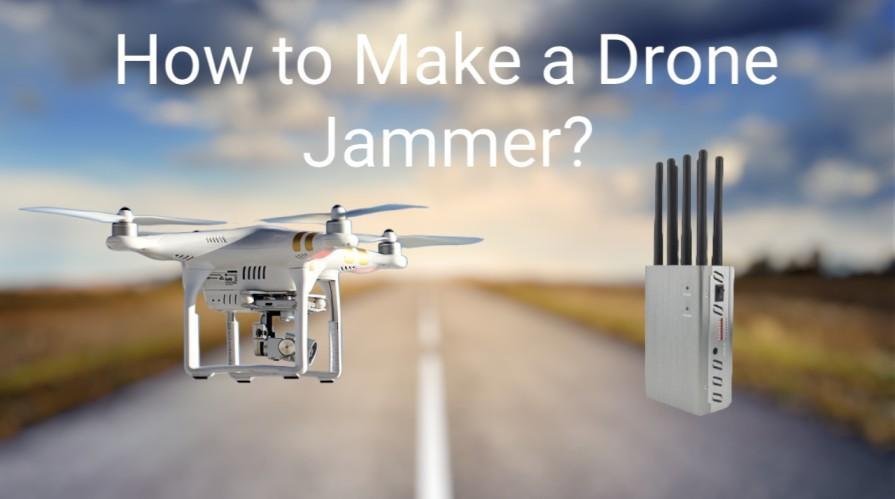Welcome to our blog post on how to make a drone jammer. In this guide, we’ll provide you with all the information you need to know about building your very own drone jammer. We’ll discuss the components and materials needed, walk through the entire process of constructing your jammer, and provide tips for troubleshooting.
By following our step-by-step guide, you’ll be able to create a working drone jammer in no time. So let’s get started!
What is a Drone Jammer?
A drone jammer is a device that emits electromagnetic signals to disrupt the communication between a drone and its remote control. By disrupting the drone’s signal, the jammer prevents the drone from being controlled, effectively rendering it useless.

Jammers can protect an area from drones or take down a drone that is already in the air. So how do drone jammers work? Drone jammers work by emitting a signal similar to drones. This disrupts the drone’s communication with its remote control and prevents it from being controlled.
Drone jammers can protect an area from drones or take down a drone that is already in the air. There are a variety of drone jammers on the market, each with its strengths and weaknesses. Some jammers are more effective than others.
How to Make a Drone Jammer?
To make your drone jammer, you need to get several materials from an online store or any electrical shop near you. These materials are given below.
RF Amplifier: This is the key component of the jammer, as it amplifies the emitted signal.
RF Transmitter: This emits the signal that will disable the drone.
Battery Pack: This will power the jammer.
Antenna: This emits the signal from the transmitter.
With these materials, you should be able to build your drone jammer.
How to Assemble a Drone Jammer?
To build a drone jammer, you need to assemble the materials by following these simple steps to get the job done.
- Connect the RF amplifier and antenna. The RF amplifier amplifies the radio signals that the antenna receives and transmits. To connect the two, simply connect the antenna to the amplifier using a coaxial cable.
- Power the device. Once the RF amplifier and antenna are connected, you will need to provide a power source to the amplifier. This can be done using a battery or a power adapter.
- Adjust the frequency. Most drones operate on specific radio frequencies, so it is important to adjust the frequency of your drone jammer to match that of the drone you want to disrupt. To do this, use the frequency controls on the RF amplifier.
- Aim the antenna. Once the frequency is set, aim the antenna at the drone you want to disrupt. The antenna should be pointed directly at the drone to maximize the effectiveness of the jammer.
- Turn on the power. Once the antenna is aimed, and the frequency is set, turn on the power to the RF amplifier. This will activate the drone jammer and disrupt the radio signals controlling the drone.
How to test Drone Jammer?
After making the drone jammer, You have to test the drone jammer. For this purpose, you must have a drone within range of the jamming signal. Here are the steps to test a drone jammer:
- Turn on the drone jammer and ensure it works properly.
- Turn on the drone and try to control it using the remote control.
- Observe the drone’s behavior. If the jamming signal is effective, the drone should not receive the remote control signals and will either hover in place or land.
- If the drone continues to respond to the remote control signals, the jamming signal may not be strong enough or may be on the wrong frequency. In this case, you may need to adjust the jamming signal or try a different frequency.
It is important to note that interfering with radio signals can be dangerous and can cause harm to individuals and property. Additionally, a drone jammer can interfere with other important radio signals, such as those used by emergency services. Therefore, it is crucial to use a drone jammer only when necessary and to carefully consider the potential consequences before using it.
Use the Drone Jammer Responsibly:
It is important to use a drone jammer responsibly to avoid causing harm to individuals or property. Here are some tips for using a drone jammer responsibly:
- Use the drone jammer only when necessary to prevent a drone from flying over a sensitive location or protect against illegal surveillance.
- Be aware of the potential consequences of using a drone jammer. Interfering with radio signals can cause harm to individuals and property and interfere with important radio signals, such as those used by emergency services.
- Do not use the drone jammer in a way that endangers others, such as by pointing the jamming signal directly at people or buildings. Pikalo
- Be aware of the laws and regulations in your area regarding the use of drone jammers. In many countries, it is illegal to use a drone jammer without proper authorization. By using a drone jammer responsibly, you can protect against the potential risks of drone use without causing harm to others.
How to Make a Drone Jammer-Conclusion:
Making a drone jammer is not as difficult as it may seem. With the right tools and materials, it is possible to create a device that can disable a drone’s signal and prevent it from functioning properly. This guide makes a drone jammer step-by-step so that anyone can make one at home. If you found this article helpful, please leave a comment and share it with your friends.
Read our other article:
How to Take Down a Drone Legally?
How Long Can a Police Drone Stay in the Air?
How Much Does a Switchblade Drone Cost?
How to track a drone operator?
